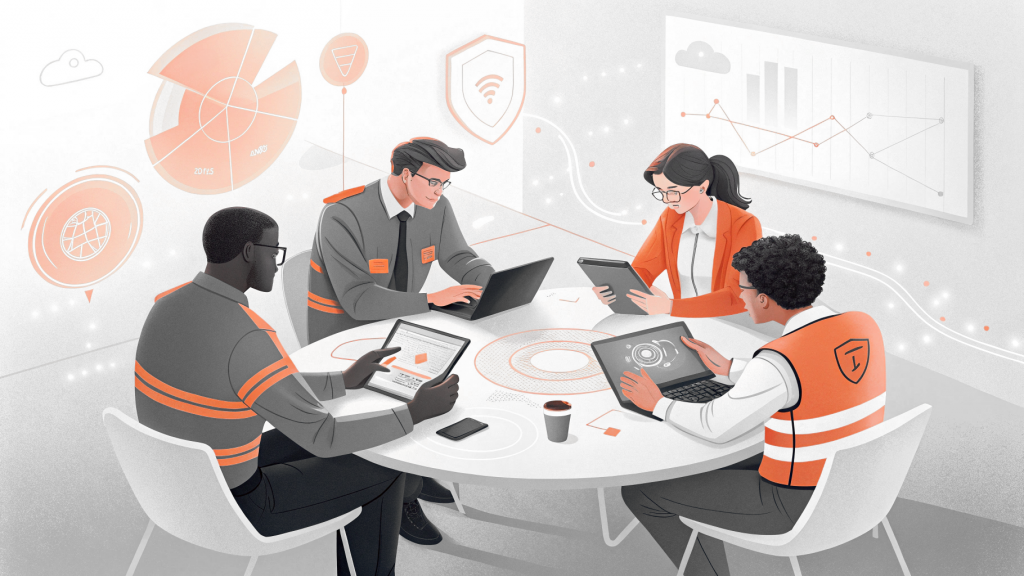Every security team has been there. Alerts start flooding in, incident response kicks into high gear, and after hours of damage control, you’ve finally contained whatever just happened. The immediate crisis is over, but now comes the really hard part: conducting a post-incident review that actually makes your organization more secure.
At this stage, many organizations proceed to shoot themselves in the foot. They turn post-incident reviews into blame sessions that accomplish nothing except making people afraid to report future problems. Organizations that handle incidents well understand that security breaches are inevitable, but learning from them isn’t.
The Psychology of Blame in Security Incidents
Humans have a natural tendency to find fault after something goes wrong. Someone clicked a phishing email, misconfigured a firewall rule, or forgot to apply a critical patch. The urge to identify the guilty party feels both natural and justified.
But blame culture creates information silos and cover-ups that make your security posture worse. When people fear punishment for honest mistakes, they start hiding information.
They might delay reporting suspicious activity to avoid false alarm accusations. They sanitize incident reports to avoid looking incompetent. Some even try to quietly fix problems rather than escalate to the security team, potentially making incidents worse.
The difference between accountability and finger-pointing matters here. Accountability focuses on understanding what happened and improving processes. Finger-pointing focuses on finding someone to blame and punish. Both examine individual actions, but they produce completely different results.
Building a No-Blame Post-Incident Culture
Effective post-incident reviews focus on systems and processes over individual mistakes. When you frame incidents as system failures rather than personal failures, people feel safer sharing the information you need to improve security.
Team members need to know that admitting mistakes or reporting problems won’t damage their careers. This doesn’t mean ignoring negligence, but it does mean treating most incidents as learning opportunities.
The “Swiss cheese model” of security failures provides a useful framework here. Each security control represents a slice of Swiss cheese with holes representing weaknesses. Attacks succeed when the holes align across multiple layers, allowing threats to penetrate all defenses. This model naturally shifts focus from individual failures to systemic gaps in your security architecture.

The Structured Post-Incident Review Process
Traditional incident reviews often feel like interrogations. Someone sits at the head of a conference table asking pointed questions while team members deflect and minimize their involvement. This approach generates defensiveness rather than useful information.
A better approach focuses on facts over fault and learning over blame. Try these techniques:
- Timeline reconstruction without assigning fault – Walk through the incident chronologically, documenting what happened without immediately analyzing why it happened or who caused it. Focus on gathering facts about systems involved, when events occurred, and what information was available to responders at each decision point.
- Root cause analysis that examines multiple factors – Look for combinations of technical gaps, process breakdowns, environmental pressures, and human factors working together rather than searching for a single point of failure. Most security incidents result from several contributing elements.
- Documentation that focuses on “what” and “how” rather than “who” – This encourages honest reporting. Instead of writing “Aaron failed to apply the security patch,” write “the security patch was not applied due to competing maintenance priorities and lack of automated deployment tools.”
- Involving the right stakeholders without creating a tribunal atmosphere – Include people who have relevant information, but keep the group small enough for productive discussion. Make it clear that the goal is learning and improvement, not judgment and punishment.
What to Examine and How to Act On It
Once you’ve established the timeline and identified contributing factors, you need to sort through your findings systematically. Most post-incident reviews uncover issues across multiple categories, and addressing them effectively requires understanding both the technical and human elements involved.
Technical Controls and Infrastructure
Security control failures, tooling limitations, or resource constraints often prevent effective incident response. Your endpoint detection might have missed a new malware variant, or network segmentation wasn’t granular enough to contain lateral movement. Sometimes monitoring tools lack visibility into certain network segments, creating blind spots that attackers can exploit.
Quick fixes might include adjusting detection rules, updating signatures, or reconfiguring existing tools. Longer-term improvements could involve budget requests for additional monitoring capabilities, infrastructure upgrades to improve network segmentation, or implementing privilege management solutions like Admin By Request’s EPM to limit damage when other controls fail.
Communication and Process Breakdowns
While technical issues are often obvious, process problems can be harder to spot but equally damaging. Communication issues, decision-making under pressure, or training deficiencies typically surface during high-stress incidents. Teams might have clear procedures for normal operations but struggle when multiple systems fail simultaneously, or critical information gets lost during shift changes between departments.
Address these by updating incident response playbooks, establishing clearer communication channels, or scheduling additional training for high-stress scenarios. Some fixes might be as simple as creating shared communication channels or updating contact lists.
Human Factors and Training Gaps
Individual knowledge gaps, stress responses, and decision-making under pressure all influence incident outcomes. Maybe someone didn’t recognize attack indicators because they lacked specific training. Maybe time pressure led to shortcuts that made the situation worse. Maybe key personnel were unavailable when their expertise was needed most.
Improvements here focus on training programs, cross-training initiatives to reduce single points of failure, and creating decision-making frameworks that work under pressure.
Organizational and Environmental Constraints
External pressures and organizational factors often determine how severe incidents become. Understaffing during critical periods, competing business priorities, budget limitations, or regulatory requirements all affect incident response capabilities. Sometimes the “root cause” isn’t technical at all but stems from organizational decisions made months earlier.
These issues typically require longer-term planning and might involve conversations with leadership about resource allocation, staffing levels, or policy changes.
Third-Party Dependencies and External Factors
Vendor relationships, cloud service dependencies, supply chain issues, and external threat intelligence gaps can all contribute to incident severity. Maybe a critical security vendor was experiencing their own outage. Maybe threat intelligence feeds didn’t include information about the specific attack vector used against your organization.
Solutions might involve diversifying vendor relationships, establishing backup communication channels, or improving information sharing with industry partners and threat intelligence sources.

Building Long-Term Learning Habits
Most security learning happens during major incidents, but the best organizations also learn from smaller events. Near-miss reviews help catch problems before they escalate. Someone spots suspicious email activity, discovers a configuration error, or notices unusual network behavior. These events offer valuable learning opportunities without the stress and urgency of full incident response.
A searchable knowledge base becomes invaluable as your team grows and changes. New team members can understand past incidents without having to experience them firsthand. The trick is documenting what happened and why rather than who was involved, helping people learn from organizational experience without creating fear about making similar mistakes.
New team member training requires careful balance. Focus on building understanding and confidence rather than creating anxiety about all the ways things can go wrong. Help them learn from past experience while encouraging them to report problems and ask questions when they encounter something unfamiliar.
Recognition also matters more than most organizations realize. When people admit errors or report potential problems early, acknowledging that behavior publicly sends a clear message about what you value. Early reporting should be rewarded, not punished, because you want more of it.
From Incidents to Resilience
Security incidents will continue happening regardless of how much you invest in prevention. Organizations that handle them most effectively treat each incident as valuable data about their security posture rather than as disasters to cover up or blame someone for.
This approach creates a positive feedback loop where incidents actually strengthen the organization over time. Teams that feel safe reporting problems early catch more issues before they become major breaches, and clear documentation of past incidents helps new team members learn without having to repeat the same mistakes. Regular process improvements based on real-world experience build more resilient defenses than theoretical planning alone.
The goal is building security cultures where transparency and continuous improvement provide better protection than any single tool or control.







